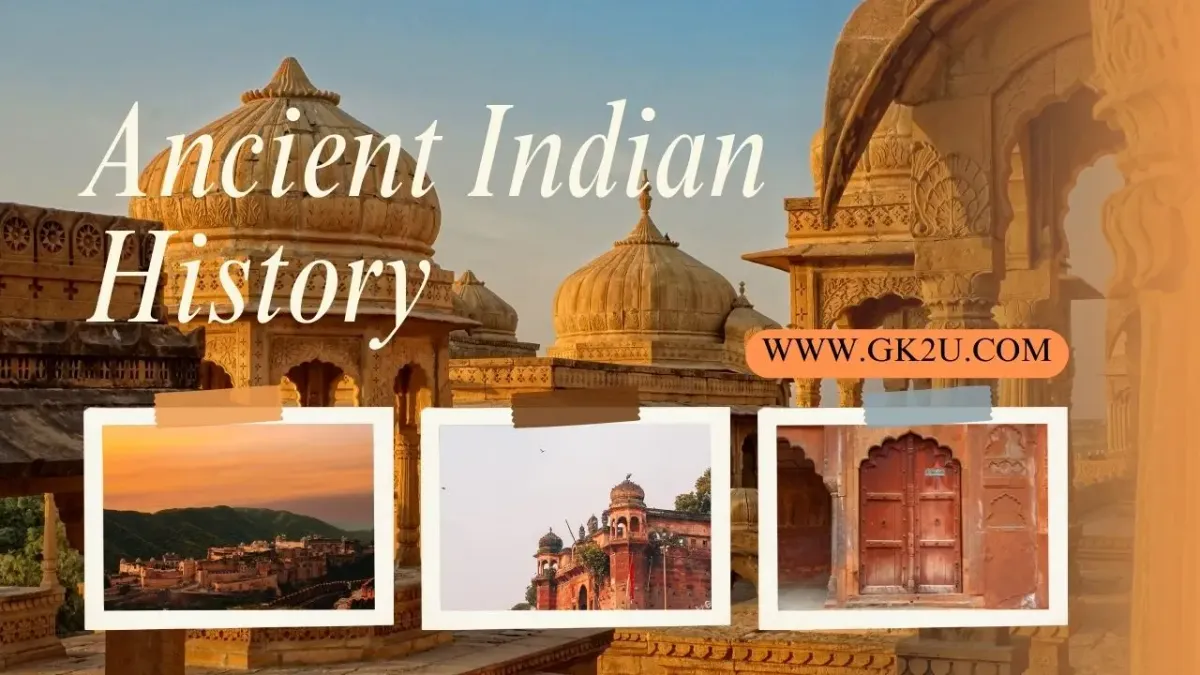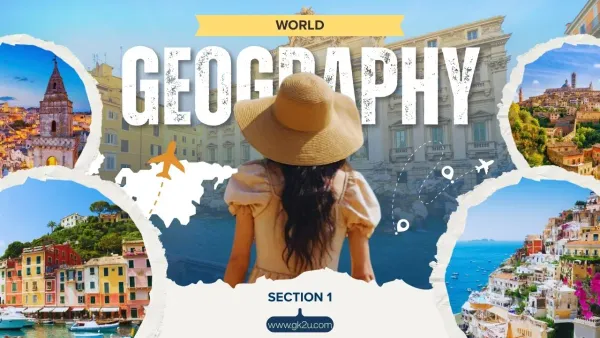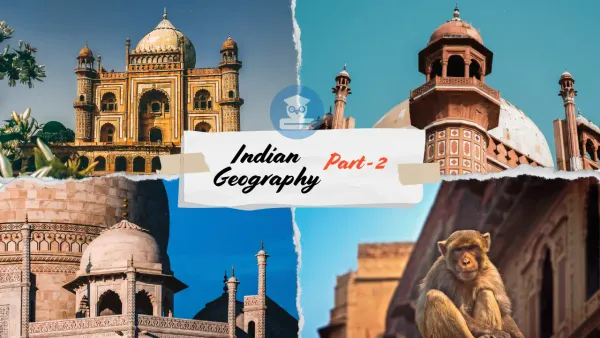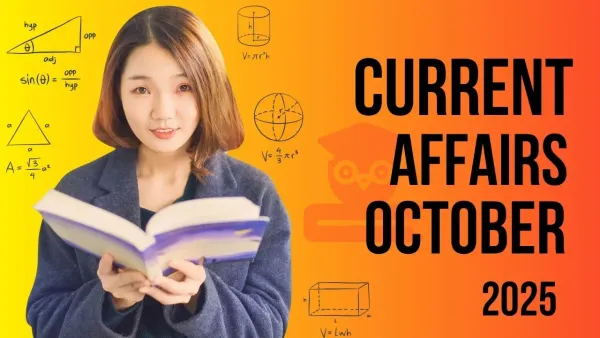Ancient Indian History

Ancient Indian History is one of the richest and most diverse chapters of world civilization, covering thousands of years of cultural, political, and social development. Spanning from the prehistoric Stone Age to the end of the Gupta Empire around the 6th century CE, this period reflects the rise of great kingdoms, philosophies, sciences, and artistic traditions. The Indus Valley Civilization (c. 3300–1300 BCE) laid the earliest urban foundations with advanced town planning, trade, and craftsmanship. Later, the Vedic period introduced Sanskrit literature, early Hinduism, and the varna system. Epic narratives like the Mahabharata and Ramayana emerged, shaping India’s cultural and spiritual identity for centuries.
Major empires such as the Maurya (322–185 BCE) and Gupta (c. 320–550 CE) dynasties unified vast territories and encouraged advancements in governance, architecture, science, and trade. Influential leaders like Chandragupta Maurya and Emperor Ashoka established strong administrative systems and promoted Buddhism across Asia. Ancient Indian scholars like Aryabhata, Sushruta, and Chanakya contributed to mathematics, astronomy, medicine, and political science, leaving a timeless legacy.
Religions such as Hinduism, Buddhism, and Jainism took root and spread far beyond India’s borders, shaping philosophies across Southeast and East Asia. Ancient Indian art and architecture flourished, from the rock-cut caves of Ajanta and Ellora to the grand stupas of Sanchi. This era also saw the development of India’s trade routes, connecting it with the Middle East, Central Asia, and Europe.
Studying Ancient Indian History offers a deep understanding of how India’s civilization evolved, its values formed, and its contributions enriched the world. It provides crucial insights for students, researchers, and history enthusiasts eager to explore India’s timeless heritage.
1. Which Greek ambassador set up a pillar in honor of Vishnu?
(A) Megasthenes
(B) Heliodoros
(C) Theodorus
(D) Plato
Correct Answer: (B) Heliodoros
Answer Explanation:The Greek ambassador Heliodoros set up a pillar in honor of Vishnu (Vasudev) at Vidisha. He was sent to the court of Sunga King, Bhagbhadra by the Greek King of Taxila, Antialkidas.
2. Who was the first Saka king in India?
(A) Moga
(B) Rudradaman
(C) Azes
(D) Ghatotkacha
Correct Answer: (A) Moga
Answer Explanation:An Indo-Scythian king, Moga (or Maues) was the first Saka king in India who established Saka power in Gandhara and extended supremacy over north-western India.
3. Which of the following Upanishads is written in prose?
(A) Isa
(B) Katha
(C) Brihadaranyaka
(D) Svetasvatara
Correct Answer: (C) Brihadaranyaka
Answer Explanation:Brihadaranyaka is the correct answer to this question.
4. Who among the following laid down for punishment for a person becoming mendicant without making adequate provision for dependent wife and children?
(A) Manu
(B) Yajnavalkya
(C) Kautilya
(D) Narada
Correct Answer: (C) Kautilya
Answer Explanation:Chanakya: He is also known by Vishnugupta, Kautilya, who was born around 350 BC and is known for his being the chief architect of the Mauryan Empire and writing the pioneering work in Economics and Political Science that is Arthashstra. He is known as Indian Machiavelli in the western world.
5. The title “Paramasaugata” was adopted by ___?
(A) Bhaskar Varman
(B) Shashanka
(C) Rajya Vardhana
(D) Harsha
Correct Answer: (C) Rajya Vardhana
Answer Explanation:Rajyavardhana has been mentioned as Parama- Saugata in Harsha’s Madhuvana and Banskhera inscriptions.
6. The Aryans dedicated the whole of a separate Mandala in Rig-Veda for the hymns dedicated to __?
(A) Agni
(B) Varuna
(C) Indra
(D) Soma
Correct Answer: (D) Soma
Answer Explanation:Soma & Haoma : (It is the 9th Mandal of Rigveda which contains 114 hymns ) The fermented juice of the plant called Soma appears to have been the only intoxicating drink used in Vedic times. So much were the ancient Aryans addicted to this drink, that Soma was soon worshipped as a deity both in India and in Iran (under the name Haoma in the latter country), and we find one entire Mandala, or Book, of the Rig-Veda, dedicated to this deity.
7. What symbol represents the birth of Gautama Buddha?
(A) Bodh tree
(B) Lotus
(C) Horse
(D) Wheel
Correct Answer: (B) Lotus
Answer Explanation:Lotus and bull resemble the symbol of the birth of Gautama Buddha.
8. Which among the following Buddhist scripture deals in the teachings of Buddhism?
(A) Abhidhamma Pitaka
(B) Vinay Pitaka
(C) Sutta Pitaka
(D) Both b & c
Correct Answer: (C) Sutta Pitaka
Answer Explanation:The Sutta Pitaka (or basket of suttas) contains the essence of the Gautama Buddha’s teaching regarding the Dhamma. It contains more than 10,000 suttas (or teachings) attributed to the Buddha or his close disciples. It is the second of three sections of the Tripitaka, the earliest Buddhist scripture. The Sutta Pitaka is made of five nikayas ( or collections) of suttas viz. Digha Nikaya, Majjhima Nikaya, Samyutta Nikaya, Anguttara Nikaya, Khuddaka Nikaya.
9. Which among the following Gupta emperors called himself “Lichchhavi-dauhitra”?
(A) Shrigupta
(B) Chandragupta I
(C) Chandragupta II
(D) Samudragupta
Correct Answer: (D) Samudragupta
Answer Explanation:Chandragupta-I married the daughter of Licchhavis, a royal influential family.His son and successor Samudragupta call himself Lichchavi- dauhitra the son of the daughter of the Lichchavis.
10. Which ruler is credited for the spread of Jainism in Karnataka?
(A) Chandragupta Maurya
(B) Bimbisara
(C) Ashoka
(D) Samparati
Correct Answer: (A) Chandragupta Maurya
Answer Explanation:The spread of Jainism in Karnataka is attributed to Chandragupta Maurya. The Emperor became a Jaina, gave up his throne and spent the last years of his life in Karnataka as a Jaina ascetic.
11. What was the fifth tenet added by Tirthankara Mahavira to the four basic tenets of Jainism?
(A) Non injury
(B) Non lying
(C) Observe continence
(D) Non stealing
Correct Answer: (C) Observe continence
Answer Explanation:The five main teachings of Jainism are do not commit violence, do not speak a lie, do not steal, do not acquire property and observe continence (brahmacharya). The brahmacharya was added by Lord Mahavira.
12. During reign of Harsha, the Kannauj assembly was held to publicise the doctrines of which of the following sects?
(A) Mahayana
(B) Hinayana
(C) Theravada
(D) Svetambara
Correct Answer: (A) Mahayana
Answer Explanation:The Kannauj assembly (643 AD) was held in the honor of Hieun Tsang (Chinese pilgrim) and to popularise Mahayana sect of Buddhism.Harshavardhana was a Mahayana Buddhist. He organised Kannauj assembly (643 AD) to popularise the Mahayana sect of Buddhism. Though, he was a tolerant ruler and supported all Indic faiths viz. Buddhism, Vedism and Jainism. The scholars regarded him as the last great Hindu emperor of India, who ruled over Northern India.
13. Mathura, the famous city was the capital of which ancient Mahajanapada?
(A) Panchal
(B) Kasi
(C) Kuru
(D) Surasena
Correct Answer: (D) Surasena
Answer Explanation:Sursena Mathura, the famous city was the capital of Sursena Mahajanpada
14. In which year, Ashoka invaded Kalinga?
(A) 261 BC
(B) 235 BC
(C) 285 BC
(D) 275 BC
Correct Answer: (A) 261 BC
Answer Explanation:The Mauryan emperor, Ashoka invaded Kalinga in 261 BC and after a fierce battle Kalinga was conquered. The 13th rock edict of Ashoka elaborates the Kalinga war.
15. At which among the following places, the Dharma-Chakra Jina Vihara was constructed by Gahadavala Queen Kumaradevi?
(A) Bodha Gaya
(B) Rajgrih
(C) Kushinagar
(D) Sarnath
Correct Answer: (D) Sarnath
Answer Explanation:Dharmachakra Jina Vihara In Sarnath, Varanasi: The last great monument in the 12th century: The temples included what is described as the Main Shrine and another entitled the, Dharmachakra Jina Vihara was the gift of Kumaradevi, the Buddhist queen of the great Gahadavala king Govindrachandra of Kannauj (CE 1114-1154).
16. Which of the following Indus Valley Site was discovered by Rakhal Das Banerjee?
(A) Kali Banga
(B) Harappa
(C) Lothal
(D) Mohenjodaro
Correct Answer: (D) Mohenjodaro
Answer Explanation:In 1922, an Indian archaeologist Mr.Rakhal Das Bannerjee discovered the Mohenjodaro site of the Indus Valley civilisation.
17. In the Indus Valley Civilization, Great Bath was found at which place?
(A) Mohenjodaro
(B) Harappa
(C) Rakhi Garhi
(D) Ropar
Correct Answer: (A) Mohenjodaro
Answer Explanation:The Great Bath was discovered at Mohenjodaro in Sindh, Pakistan. It measures 11.88 meters x 7.01 meters and has a maximum depth of 2.43 meters.
18. The script of Indus Valley people was ___?
(A) Desi Script
(B) Pictographic Script
(C) Brahmi Script
(D) Kharosti Script
Correct Answer: (B) Pictographic Script
Answer Explanation:The pictographic script was used by the Indus Valley people.
19. Which Ashokan pillar edict mentions the Dhamma Mahamattas?
(A) pillar edict VII
(B) pillar edict VIII
(C) pillar edict VI
(D) pillar edict V
Correct Answer: (A) pillar edict VII
Answer Explanation:The Ashokan Pillar Edict-VII mentions the Dhamma Mahamattas. It propagated a proper courtesy to slaves and servants, obedience to parents, respectful behaviour towards Brahmans and Sharmanas and generiosty towards friends, acquaintances and relatives.
20. Which Ashokan pillar edict provides a list of animals and birds killing of which was prohibited?
(A) Pillar edict V
(B) Pillar edict VIII
(C) Pillar edict XII
(D) Pillar edict X
Correct Answer: (A) Pillar edict V
Answer Explanation:The Pillar edict-V of Ashoka provides a list of animals and birds which should not be killed on some days and another list of animals which have not to be killed at all occasions and also describes the release of 25 prisionars by Mauryan Emperor Asoka.
21. Viratnagar, capital of Matsya mahajanapada located in which region ?
(A) Malwa
(B) Peshawar
(C) Jaipur
(D) Bundelkhand
Correct Answer: (C) Jaipur
Answer Explanation:Jaipur Viratnagar, capital of Matsya mahajanpada located near present Jaipur. It was used as a hiding place by Pandavas during 13th year of their exile.
22. Which rock edict gives information about Asoka’s conversion to Buddhism?
(A) Bhabru rock edict
(B) Kalinga rock edict
(C) Tarai rock edict
(D) Barabar cave rock edict
Correct Answer: (A) Bhabru rock edict
Answer Explanation:The Bhabru rock edict gives information about Asoka’s conversion to Buddhism. The rock edict stated that he has full faith in Buddha, Sangha and Dhamma.
23. The Gufkral chalcolithic site is located in which state?
(A) Rajasthan
(B) Jammu & Kashmir
(C) Karnataka
(D) Uttarakhand
Correct Answer: (B) Jammu & Kashmir
Answer Explanation:Jammu & Kashmir will be the correct answer.
24. The oldest evidence in human history for the drilling of teeth in a living person was found in which of the following cultures?
(A) Ahar banas
(B) Mehrgarh
(C) Sohn Valley
(D) Malwa
Correct Answer: (B) Mehrgarh
Answer Explanation:Mehrgarh wil be the correct answer.
25. Among all the pillar edicts of Ashoka, which one is the longest one?
(A) 7th pillar edict
(B) 6th pillar edict
(C) 5th pillar edict
(D) 3th pillar edict
Correct Answer: (A) 7th pillar edict
Answer Explanation:The 7th pillar edict elaborates the works done by the Mauryan Emperor, Ashoka for Dhamma Policy . He stated that all sects desire both self control and purity of mind.
26. Which Ashokan inscription prohibits animal slaughter?
(A) Major rock edict III
(B) Major rock edict I
(C) Major rock edict IV
(D) Major rock edict V
Correct Answer: (B) Major rock edict I
Answer Explanation:The Major rock edict I of Ashoka prohibits animal slaughter and holidays of festive gathering. Only two peacocks and one deer were killed in Asoka’s kitchen. He wished to discontinue this practice of killing two peacocks and one deer as well. On the other hand, Major Rock Edict II mentions medical treatment for men and animals, construction of roads, wells and tree planting.
27. In the Maurya empire, what was the name of department of the Chief of the Mines ?
(A) Dauvarika
(B) Antapal
(C) Karmantika
(D) Paura
Correct Answer: (C) Karmantika
Answer Explanation:Karmantika was the department name of the Chief of the Mines.
28. In context of Mauryan administration, who was the chief supervisor of the collection of revenue from the whole kingdom?
(A) Samaharta
(B) Sannidhata
(C) Karmantika
(D) Antapal
Correct Answer: (A) Samaharta
Answer Explanation:As per the Arthashastra of Chankya, Samaharta was the Chief Collector general of revenue that supervises the collection of revenue from the whole kingdom.Pradeshtri was known as the Divisional Commissioner. They were the modern district magistrates and in charge of district. They were to make tours once in every 5 years to inspect the entire administration of the areas under control. Antapal was known as the Governor of the frontier.
29. Which of the following book is the sequel of an epic ‘Silappadikarma’?
(A) Jivaka Chintamani
(B) Manimekalai
(C) Bharatman
(D) Kunal
Correct Answer: (B) Manimekalai
Answer Explanation:The story of Manimekalai is a sequel of an epic ‘Silappatikaram’ that tells the story of the conversion to Buddhism of the daughter of Kovalan and Madhavi. Seethalai Saathanaar was the author of the book ‘Manimekalai’.
30. In Sangam age, the book ‘Bharatam’ was written by _?
(A) Perudevanar
(B) Manimekalai
(C) Seethalai Saathanaar
(D) Tiruttakrdeva
Correct Answer: (A) Perudevanar
Answer Explanation:The book, ‘ Bharatam’ was written by Perudevanar. The author had also composed the invocatory versus for the Sangam classics Ahnanuru, Puranamuru, Kuruntogai, Narrinai and Aingurunuru.
31. The ruler of Kushan dynasty, Kanishka was the follower of__?
(A) Jainism
(B) Hinayanism
(C) Hindusim
(D) Mahayanism
Correct Answer: (D) Mahayanism
Answer Explanation:Kanishka was the follower of Mahayanism or the new theory of Buddhism. Mahayana means the Greater Vehicle. It refers to the path of the Bodhisattva seeking complete enlightenment for the benefit of all sentient beings, also called Bodhisattva Vehicle.
32. Who among the following introduced Shaka era?
(A) Ashoka
(B) Kanishka
(C) Rudraraman
(D) Bimbisara
Correct Answer: (B) Kanishka
Answer Explanation:Kushana emperor Kanishka is credited with the initiation of the Saka era on his accession to the throne in 78 A D.
33. Which among the following kings was also known as Mamallan (great wrestler)?
(A) Pulakesi II
(B) Mahendravarman I
(C) Narasimhavarman I
(D) None of the above
Correct Answer: (C) Narasimhavarman I
Answer Explanation:Narasimhavarman I was a Tamil king of the Pallava dynasty who ruled South India from 630–668 A.D. Narasimhavarman was also known as Mamallan (great wrestler) and Mamallapuram (Mahabalipuram) was named after him
34. Rajatarangini, a book that generally recorded the heritage of Kashmir in the 12th Century, was written by__:
(A) Pravaragupta
(B) Kalhana
(C) Lalitapida
(D) Kashyapa
Correct Answer: (B) Kalhana
Answer Explanation:Kalhana penned the book named Rajatarangini in 12th century CE. It is a metrical historical chronicle of north-western Indian subcontinent, particularly the kings of Kashmir, written in Sanskrit. Rajatarangini describe the misrule prevailing in Kashmir during the reign of King Kalash, son of King Ananta Deva of Kashmir.
35. Which of the following is the most common motif of the Indus Seals ?
(A) Unicorn
(B) Bull
(C) Rhinoceros
(D) Elephant
Correct Answer: (A) Unicorn
Answer Explanation:The unicorn is the most common motif on Indus seals and appears to represent a mythical animal that Greek and Roman sources trace back to the Indian subcontinent.
36. Who was the first Indo-Greek king, who became Buddhist?
(A) Antiochus II
(B) Apollodotus I
(C) Apollodotus II
(D) Menander I
Correct Answer: (D) Menander I
Answer Explanation:Menander I was the Indo-Greek king who established a large empire in the South Asia and became a patron of Buddhism.
37. Which of the following are two works of Kalidasa?
(A) Raghuvamsha and Kiratarjuniya
(B) Kumara Sambhav and Raghuvamsha
(C) Malti Madhava and Kumara Sambhava
(D) Malti Madhav and Kumara Sambhava
Correct Answer: (B) Kumara Sambhav and Raghuvamsha
Answer Explanation:Kalidasa was one of the gems of the court of Gupta king Chandragupta II (375–415 CE). The poems he wrote were usually of epic proportions and were written in classical Sanskrit. He wrote two epic poems called Kumara sambhava, which means birth of Kumara and the Raghuvamsha, which means dynasty of Raghu. There are also two lyric poems written by Kalidasa known as Meghadutta that stands for cloud messenger and the Ritusamhara that means description of the seasons. Meghadutta is one of the finest works of Kalidasa in terms of world literature. The beauty of the continuity in flawless Sanskrit is unmatched till date. The most famous and beautiful work of Kalidasa is the Shakuntalam. It is the second play of Kalidasa after he wrote Malavikagnimitra. The Shakuntalam tells the story of king Dushyant who falls in love with a beautiful girl Shakuntala, who happens to be the daughter of a saint.
38. Bring out the only incorrect statement:
(A) Jorwe culture was most prominent in Maharashtra
(B) Hathonora is a site where a true hominid fossil was found
(C) The Earliest evidence of Rice cultivation has come from Belan Valley
(D) The people of all sites in Rajasthan during the Neolithic age were aware of Bricks
Correct Answer: (D) The people of all sites in Rajasthan during the Neolithic age were aware of Bricks
Answer Explanation:The people of all sites in Rajasthan during the Neolithic age were aware of Bricks, This is the incorrect statement. People of Gilund in Rajasthan were NOT aware of bricks
39. Which of the following Indus Valley sites is not a present in India?
(A) Chanhudaro
(B) Farmana
(C) Khirasara
(D) Loteshwar
Correct Answer: (A) Chanhudaro
Answer Explanation:Chanhudaro is an archaeological site belonging to the post-urban Jhukar phase of Indus valley civilization. The site is located 130 kilometers (81 mi) south of Mohenjo-daro, in Sindh, Pakistan.
40. At which of the following Harappan sites, terracotta female figures were discovered?
(A) Mohenjo-daro
(B) Kot Bala
(C) Kot Diji
(D) Khirasara
Correct Answer: (A) Mohenjo-daro
Answer Explanation:Mohenjo-daro is an archaeological site in the province of Sindh, Pakistan. Built around 2500 BCE, it was one of the largest settlements of the ancient Indus Valley civilization. Various discoveries at Mohenjo-daro include- Great Bath (the biggest bath ghat), Great granary, Bronze dancing girl, Bearded man, terracotta toys, Bull seal, Pashupati seal, three cylindrical seals of the Mesopotamian type, a piece of woven cloth.
41. The Brihadishwara Temple (Rajarajeswaram) is situated at?
(A) Madhya Pradesh
(B) Thanjavur
(C) Lucknow
(D) Andhra Pradesh
Correct Answer: (B) Thanjavur
Answer Explanation:Brihadeeswarar Temple or Peruvudaiyar Kovil or Rajrajeshwaram temple at Thanjavur is the world’s first complete “granite” temple. It was built by Rajaraja Chola-I and is a part of UNESCO’s World Heritage sites. The Vimana or the temple tower (known as Raja Gopuram) is 216 feet in height and is one of the tallest buildings of its kind. The Nandi is carved out of a single rock. This temple has completed 1 millennium in 2010. It was dictated by lord Shiva to Rajraja Chola I when he triumphed Ilam (Sri Lanka) Island.
42. At which among the following places, the famous Bull Seal of Indus Valley Civilization was found?
(A) Harappa
(B) Mehrgarh
(C) Mohenjo-Daro
(D) Adamagarh
Correct Answer: (C) Mohenjo-Daro
Answer Explanation:
- The famous Bull-seal of Indus Valley Civilization was found at Mohenjo-Daro.
- The Bull-seal is known to be dated back to around 2200-2500 BC.
- Seals were extensively used as an authentication mechanism during the trade of goods by the harappans.
- The Pashupati seal was found in the Harappan site of Mohenjo-Daro.
- The Dockyard was excavated in the Harappan site of Lothal.
- The Carnelian beads were found at the site of Chanhudaro.
43. Which among the following was the state emblem of Pandyas?
(A) Fish
(B) Bow & Arrow
(C) Sun
(D) Horse
Correct Answer: (A) Fish
Answer Explanation:When Madurai Pandya left Buddhism they changed the horse with Bodhi tree to Fish, a symbol of Vishnu. This Fish Symbol became the dynastic emblem of the Pandyan.
44. Bhandi was a chief secretary of which among the following Indian Kings?
(A) Samudragupta
(B) Chandragupta Vikramaditya
(C) Harshavardhan
(D) Skandgupta
Correct Answer: (C) Harshavardhan
Answer Explanation:Bhandi was a leading noble of Kannauj and on the advice of the political leaders of Kannauj; he offered the crown of Kannauj to Harsha after the death of Grahavarmana. Bhandi was later described as one of the chief officers of Harsha. When Harsha chased Shashanka for the release of his sister, through Bhandi only Harsha could know that his sister has been released and Shashanka has escaped.
45. Which among the following sites near Pondicherry gives the best support to the view on an ancient trade between Rome and the ancient Tamil country of India?
(A) Villianur
(B) Suttukeni
(C) Arikamedu
(D) Andiarpalayam
Correct Answer: (C) Arikamedu
46. As per the Hindu Philosophy, what is the number of articles under the restraints and practices (Yamas and Niyamas)?
(A) 5
(B) 15
(C) 20
(D) 36
Correct Answer: (C) 20
Answer Explanation:The 10 Yamas are Ahimsa, Satya, Asteya (not stealing), Brahmacharya (marital fidelity and chastity), Kshama, Dhriti (fortitude), Daya (compassion), Arjava (sincerity and non-hypocrisy), Mitahara (measured diet).
The 10 Niyamas are Tapas (persistence), Santosa (contentment), Astikya (belief in self and God), Dana (generosity), Isvarpujana (worship of one’s God), Siddhanta Sravana (listening to scriptures), Mati (thinking and understanding), Japa (reciting prayers), Huta & Vrata. Huta means religious rituals and Vrata means fulfilling religious vows.
47. Who among the following was the first famous and powerful king of the Sen dynasty?
(A) Ballal Sen
(B) Vijay Sen
(C) Samanta Sen
(D) Vikram Sen
Correct Answer: (C) Samanta Sen
48. Vedic mythology refers to an ancient settlement called Pushkalavati after Pushkal, who was the son of King Bharata in the epic Ramayan. What is the modern location of Pushkalavati?
(A) Panipat
(B) Pushkar
(C) Peshawar (in Pakistan)
(D) Punjab
Correct Answer: (C) Peshawar (in Pakistan)
Answer Explanation:Pushkalavati was the capital of the ancient Kingdom of Gandhara. Its ruins are currently located in Charsadda, Pakistan, located in Peshawar valley in the Khyber Pakhtunkhwa province (formerly NWFP). Pushkalavati was home of the Sanskrit grammarian Panini.
49. Pushyamitra Shunga, who was originally a Senapati of the Mauryan Empire and assassinated the last Mauryan Emperor Brihadrath in 185 BC was a ____?
(A) Brahaman
(B) Kshatriya
(C) Vaishya
(D) Shudra
Correct Answer: (A) Brahaman
50. Savatthi was capital of which among the 16 Mahajanpadas?
(A) Kasi
(B) Kosala
(C) Matsya
(D) Anga
Correct Answer: (B) Kosala
51. The railings of the Sanchi Stupa were made during?
(A) Maurya Period
(B) Sunga Period
(C) Kushana Period
(D) Gupta Period
Correct Answer: (B) Sunga Period
52. Gandhar art is a combination of ____________ ?
(A) Indian Style + Greek Style
(B) Greek Style + Kushan Style
(C) Indian Style + Kushan Style
(D) Indian Style + Persian Style
Correct Answer: (C) Indian Style + Kushan Style
53. What was used normally in the construction of Royal Houses during the Mauryan period?
(A) Wood
(B) Mud & Lime
(C) Burnt Bricks
(D) None of the above
Correct Answer: (A) Wood
54. Algebra was invented by which of the following Ancient Indian Mathematicians?
(A) Bhaskara
(B) Aryabhatta
(C) Medhatithi
(D) None of the above
Correct Answer: (B) Aryabhatta
55. ”Kaviraja” or King of poets was a title of _________?
(A) Chandra Gupta Maurya
(B) Samudra Gupta
(C) Skand Gupta
(D) Ashoka
Correct Answer: (B) Samudra Gupta
56. Who among the following king is related to Repair of Sudarsana Lake?
(A) Rudradaman
(B) Gautmi Putra Satkarni
(C) Kharavela
(D) Ashoka
Correct Answer: (A) Rudradaman
Answer Explanation:The Junagarh Rock Inscription mentions that the Saka ruler Rudradaman (150-151 BC) had taken up the task of restoration of lake Sudarsana.
57. In Vedic age which among the following grains was referred to as vrihi?
(A) Barley
(B) Wheat
(C) Rice
(D) Maize
Correct Answer: (C) Rice
58. What was the profession of Karmara in Vedic age?
(A) Blacksmith
(B) Potter
(C) Ratha (Chariot ) Makers
(D) Goldsmith
Correct Answer: (A) Blacksmith
Answer Explanation:
Some of the ancient professions and their names are as follows:
- Karmara → Blacksmith
- Takshan → Carpenter
- Vapta → Barber
- Charmana → Tanner
- Hiranayakara → Goldsmith
- Tantuvaya → weaver
59. Satapatha Brahmana belongs to which of the following Vedas?
(A) Krishna Yajurveda
(B) Shukla Yajurveda
(C) Rigveda
(D) Samaveda
Correct Answer: (B) Shukla Yajurveda
60. Sarnath is associated with which aspect of Buddha’s life?
(A) Birth
(B) Residence
(C) First sermon
(D) Death
Correct Answer: (C) First sermon
Answer Explanation:Buddha gave his first sermon at the Sarnath which is known as “Dhammachakra Parivartan”
61. Who among the following is considered to organize a confederacy of 10 tribes or Kings against Sudas?
(A) Vashishta
(B) Vishawamitra
(C) Puru
(D) Agatsya
Correct Answer: (B) Vishawamitra
Answer Explanation:The battle of ten kings was fought between Sudas, a Bharata king of the Tritsu family and the confederacy of ten well-known tribes- Puru, Yadu, Turvasa, Anu, Druhyu, Alina, Paktha ,Bhalanas,Shiva and Vishanin. In the bloody and decisive battle on the banks of River Purushni, the Bharatas emerged victorious. The reason behind the war is the rivalry between Vishwamitra and Vasishtha.
62. Who among the following was the most important divinity during the early Vedic era?
(A) Agni
(B) Indra
(C) Vayu
(D) Varuna
Correct Answer: (B) Indra
63. Which school of art is also called as mature School?
(A) Keshena School
(B) Andhra School
(C) Arafat School
(D) Mathura school
Correct Answer: (A) Keshena School
64. Which among the following is not correctly matched?
(A) Takshshila – Gandhar
(B) Viratanagara – Matsya
(C) Sursen – Kausambi
(D) All are correct
Correct Answer: (C) Sursen – Kausambi
Answer Explanation:Sursen was capital of Mathura and
Capital of Kausambi was Vatsa
65. Kavi Vatsal was a title assumed by a king belonging to which of the following dynasties?
(A) Pushyabhuti
(B) Pallava
(C) Maurya
(D) Satavahana
Correct Answer: (D) Satavahana
Answer Explanation:The name of the king is Hala who assumed the title of Kavivatsal
66. Which among the following was referred to as Buvan Chakshu in Early Vedic era?
(A) Earth
(B) Fire
(C) Water
(D) Moon
Correct Answer: (B) Fire
67. Painted Grey ware” was used in which of the following era?
(A) Early Vedic Era
(B) Later Vedic Era
(C) Harappan Era
(D) None of the above
Correct Answer: (B) Later Vedic Era
Answer Explanation:The Painted Grey Ware culture is an Iron Age Indian culture of the western Gangetic plain and the Ghaggar-Hakra valley on the Indian subcontinent, lasting from roughly 1200 BCE to 600 BCE.
68. Which among the following Chera King is famous for the legends surrounding Kannagi ( he built a temple dedicated to Kannagi) and is also known as ” Red Cherra”?
(A) Karikala
(B) Senguttuvan
(C) Nedum Cheralathan
(D) Elkara
Correct Answer: (B) Senguttuvan
69. Which among the following sites of Indus Valley era is considered as the oldest “Ploughed field” in the world?
(A) Harappa
(B) Kalibangan
(C) Lothal
(D) Rangpur
Correct Answer: (B) Kalibangan
70. Which among the following Buddhist work is written in Sanskrit?
(A) Mahavamsha
(B) Deepavamsha
(C) Divyadan
(D) Milinda Panho
Correct Answer: (C) Divyadan
71. Which among the following dynasty was founded by Vindyashakti?
(A) Vakataka
(B) Satvahana
(C) Hoysala
(D) Kadamaba
Correct Answer: (A) Vakataka
72. Which among the following is considered to be the official law book of the Guptas?
(A) Manusmriti
(B) Parashara Smriti
(C) Yajnavalkya Smriti
(D) Vyasa Smriti
Correct Answer: (C) Yajnavalkya Smriti
Answer Explanation:Yajnavalkyasmriti, which is almost regarded as the official law book of Guptas, was composed also in Gupta era.
73. Which among the ancient Indian Play has referred to the defeat of Yavanas on the bank of River Sindhu in the hands of Vasumitra?
(A) Raghuvamsa
(B) Malvikagnimitram
(C) Vikramorvashiyam
(D) Dasakumarcharita
Correct Answer: (B) Malvikagnimitram
Answer Explanation:The play mentions Vasumitra, the son of Agnimitra, defeating a band of Yavanas on the right bank of the river Sindhu when they tried to capture the sacrificial horse of Pushyamitra.
74. Which among the following was the capital of Vatsa Mahajanapada?
(A) Mathura
(B) Bairath
(C) Kausambi
(D) Kashi
Correct Answer: (C) Kausambi
75. Which among the following was used to create sculptures in the Mathura school of art that flourished around 1st century AD?
(A) Marble
(B) State stone
(C) Granite
(D) Red sandstone
Correct Answer: (D) Red sandstone
76. The temple of Konark was built by Narasimha of the:
(A) Maratha Dynasty
(B) Chola Dynasty
(C) Ganga Dynasty
(D) Vijaynagar Empire
Correct Answer: (C) Ganga Dynasty
77. In stone age, the Microliths were most commonly found in which of the following ages?
(A) Paleolithic
(B) Mesolithic
(C) Neolithic
(D) Chalcolithic
Correct Answer: (B) Mesolithic
Answer Explanation:Microliths were most commonly found in Mesolithic era.
78. Which of the following is a correct statement about Indus Valley Civilization?
(A) Both Harappa and Mohejodero are is located on the banks of Indus River
(B) Both Chanhudaro and Kalibangan were located within the boundaries of present day Rajasthan.
(C) Both Surkotada and Dholavira are located in Katch of Gujarat
(D) Lothal site was located on the bank of Narmada river
Correct Answer: (C) Both Surkotada and Dholavira are located in Katch of Gujarat
Answer Explanation:Mohenjodero was located on banks of river Indus. Harappa on Ravi. Chanhudaro is in Pakistan now. Lothal was on mouth of Gulf of Cambay.
79. Which of the following is not a correct statement about Buddhist Canonical literature?
(A) Abhidhamma Pitaka was compiled in third Buddhist Council
(B) Digha Nikaya is a part of the Sutta Pitaka
(C) Vinaya Pitaka primarily deals with monastic rules for monks and nuns
(D) Sutta Pitaka deals with philosophy and psychology and lays down methods for training the mind.
Correct Answer: (D) Sutta Pitaka deals with philosophy and psychology and lays down methods for training the mind.
Answer Explanation:Abhidhamma Pitaka is the third and latest of the Pali canonical texts recognized in the early Buddhist Theravāda tradition. Its compilation is dated to the third Buddhist Council, held during the reign of the Mauryan emperor Asoka, that is, c. third century BCE. The text focuses on philosophy and psychology and lays down methods for training the mind.
80. Which of the following rulers were closely associated with Yuehzhi nomadic people?
(A) Shaka
(B) Kushana
(C) Pahalva
(D) None of them
Correct Answer: (B) Kushana
Answer Explanation:The term Yuehzhi refers to nomadic people originally living in northwest China who moved to Central Asia in circa second century BC. The Kushana were a branch of these people, who reached the subcontinent in circa first century BCE.
81. Bring out the only incorrect statement:
(A) Rajukas were appointed by Asoka as Judicial Officers
(B) The Sunga dynasty retained the title Senapati, even after becoming kings
(C) Kalinganagar was an ancient city destroyed by Cyclone
(D) Asoka has expressed faith in Buddhism in Kandhar Inscription
Correct Answer: (D) Asoka has expressed faith in Buddhism in Kandhar Inscription
Answer Explanation:Bhabru edict is known as an edict in which Asoka expressed faith in Buddhist Creed
82. In stone age, the Microliths were most commonly found in which of the following ages?
(A) Paleolithic
(B) Mesolithic
(C) Neolithic
(D) Chalcolithic
Correct Answer: (B) Mesolithic
Answer Explanation:Microliths were most commonly found in the Mesolithic era.
83. Which of the following rulers were closely associated with Yuehzhi nomadic people?
(A) Shaka
(B) Kushana
(C) Pahalva
(D) None of them
Correct Answer: (B) Kushana
Answer Explanation:The term Yuehzhi refers to nomadic people originally living in northwest China who moved to Central Asia in circa second century BC. The Kushana were a branch of these people, who reached the subcontinent in circa first century BCE.
84. Which of the following site is an example of Banas culture?
(A) Ahar
(B) Kayatha
(C) Navdatoli
(D) Inamgaon
Correct Answer: (A) Ahar
Answer Explanation:
The important non-Harappan chalcolithic cultures are
- Banas culture (2600BC–1900 BC) in south-east Rajasthan, with Ahar near Udaipur and Gilund as its key-sites
- Kayatha culture (2100BC–2000 BC) with Kayatha in Chambal as its chief site in Madhya Pradesh;
- Malwa Culture (1700BC–1400BC) with Navdatoli in Western Madhya Pradesh as an important site
- Jorwe culture (1400BC– 700BC) with Inamgaon and Chandoli near Pune in Maharashtra as its chief centers
85. The rock paintings found at Bhimbetka generally belong to which of the following periods?
(A) Paleolithic
(B) Mesolithic
(C) Neolithic
(D) Chalcolithic
Correct Answer: (B) Mesolithic
Answer Explanation:The Rock paintings found at Bhimbetka (near Bhopal) belonging generally to the mesolithic period indicate the artistic taste of the people
86. Giak and Kiari are Neolithic sites of:
(A) Assam
(B) Madhya Pradesh
(C) Jammu & Kashmir
(D) Maharastra
Correct Answer: (C) Jammu & Kashmir
Answer Explanation:Giak and Kiari are Neolithic sites located in Ladakh.





